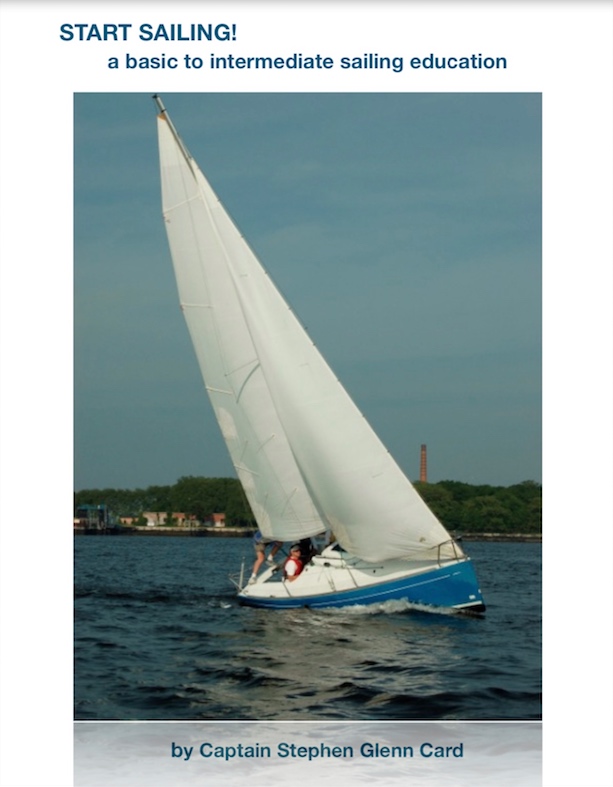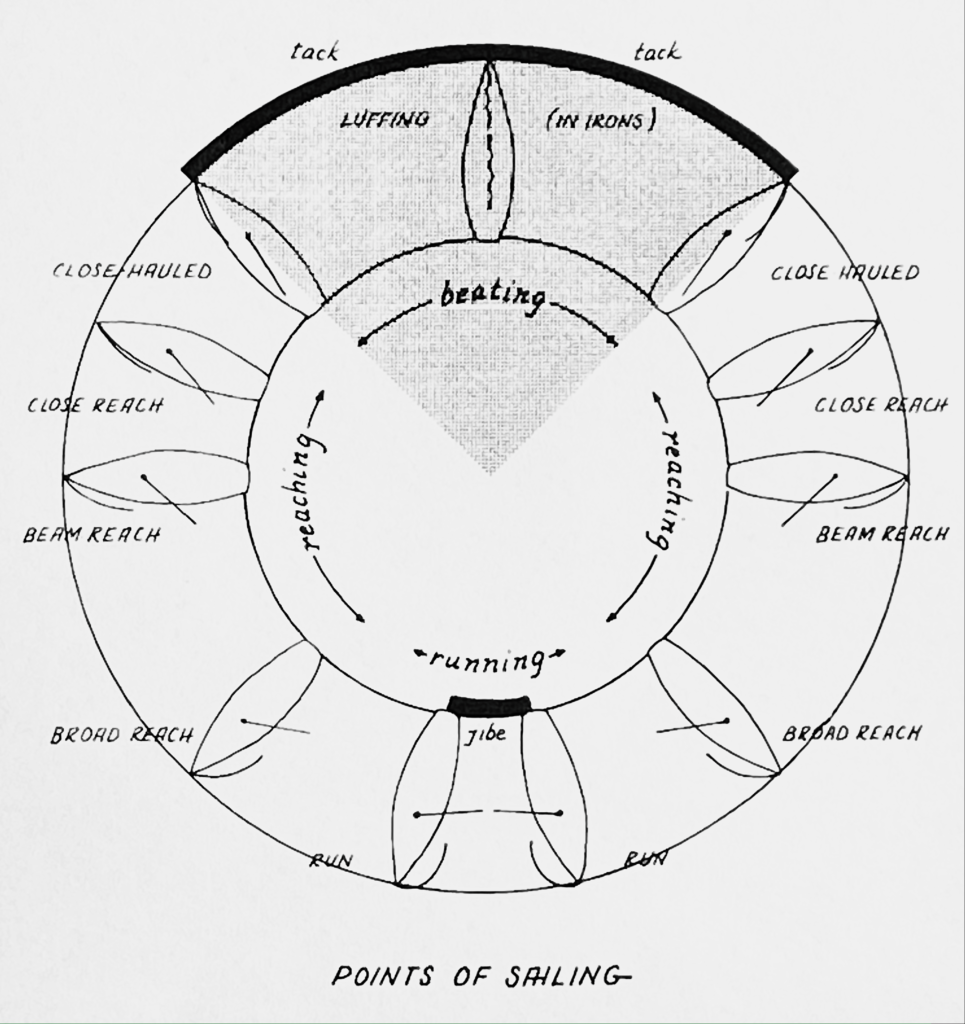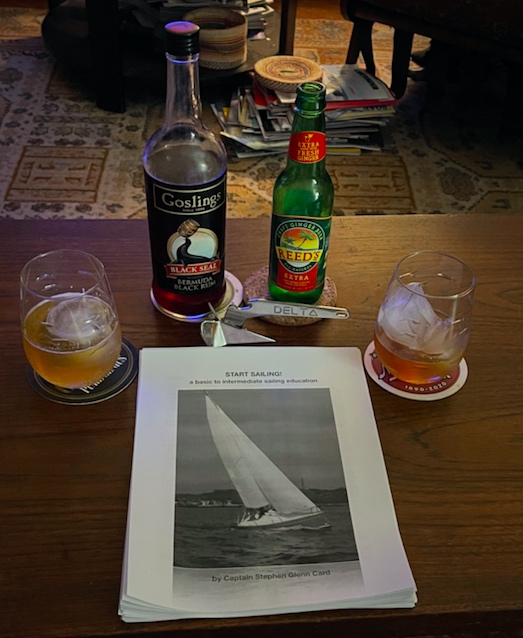More accurately, I largely re-wrote his textbook on how to sail a boat from the 1970’s but kept the best parts, which inspired the project in the first place.
In a previous Blog Rant, I wrote about how both my Dad and I wrote books for our respective sailing schools. I’d been meaning to resurrect his for awhile, and that post put me over the edge. I gone went and did it!
That’s one of our Beneteau First 21.0 sloops flying along upwind, with Teacher John as he’s known on the transom where he’s known to love perching or propelling himself. Yup; that’s a class in progress.
Dad’s textbook, The Masters Course, was brilliant: pithy, funny, effective. Well illustrated. Nothing is perfect; his wasn’t. In fact, a few of the diagrams on piloting and navigation left a lot to be desired. But, these weren’t important to this level of training. I left them out of the new book.
As well as wanting Dad’s book to be resurrected, I also just wanted a better learn to sail book than ASA was putting out. I disagree with some of the content in their book, completely disagree with the order and emphasis of the material, and can’t deal with a defective diagram in it that’s a very important and which is very fucked up. It’s so bad, that after our first day of instruction, we challenge students to figure out “what’s wrong with this picture.” Some do on the spot after pondering briefly, most take a little longer. A few don’t figure it out. But, to a person, once they see it or are told it, they get it. And, they can’t believe it was allowed to go to print that way.
(Not long ago, I found an error in The Annapolis Book of Seamanship by John Rousmaniere. Now, this is perhaps the best single all-around sailing reference available. I highly recommend it to all beginners and intermediates; most advanced (and some pro) sailors can learn at least a little if not a lot from it. I corresponded with John about it; I don’t think he realized the error was there. “After all these decades, you’re the first person to spot this,” he wrote. I see EVERYTHING. It is known.)
Truth be told, Dad’s book had what I consider to be an error in one of the illustrations. But, I left that one out and used many of the good ones! Almost everyone will eventually err in an explanation or illustration. However, when it’s caught, it ought to be corrected.
My book? It started out as Dad’s book redux, but became more mine than his. I did keep parts of his prose intact. I augmented other parts. I deleted some others. And, of course, I wrote several sections from scratch.
Our new book is going out digitally to people as a PDF. That way, it can be easily corrected, but also searched, viewed on any mobile device, and updated easily. Also, instead of putting painful step-by-step photos of knot illustrations, for example, we can have one good reference photo plus a link to quality step-by-step videos! And the book can easily evolve as photos are added, better ones are found, an idea comes to mind for a better explanation or ordering of content, etc. Of course, if anyone prefers, it can be printed.
What better way to celebrate writing a book on sailing than with sailor drinks? Dark ‘n Stormy: Reed’s ginger beer, Gosling’s Black Seal rum, oversized ice balls and cubes, and a mini-anchor bottle opener. It’s made by Lewmar, and a replica of their Delta Fast-Set anchor. That anchor is on the bow of most charter boats around the world. Why? It holds best in most seabeds. We’re all about the “why’s” of things.
Yes, I wrote about anchoring in the book. I left the illustrations to others; I explained what one is really trying to do when anchoring, and how to get the job done on the water.



